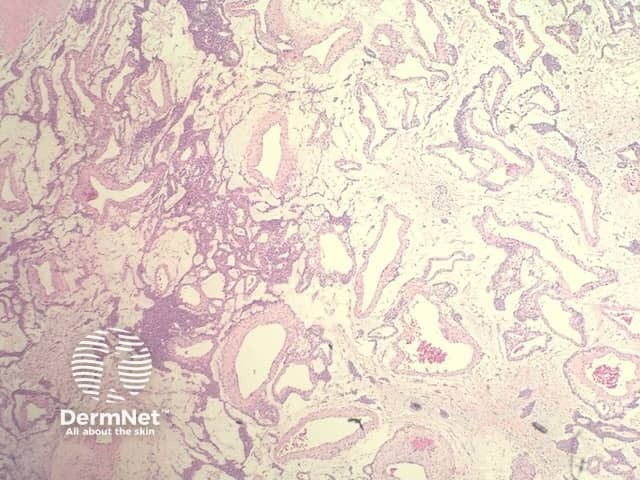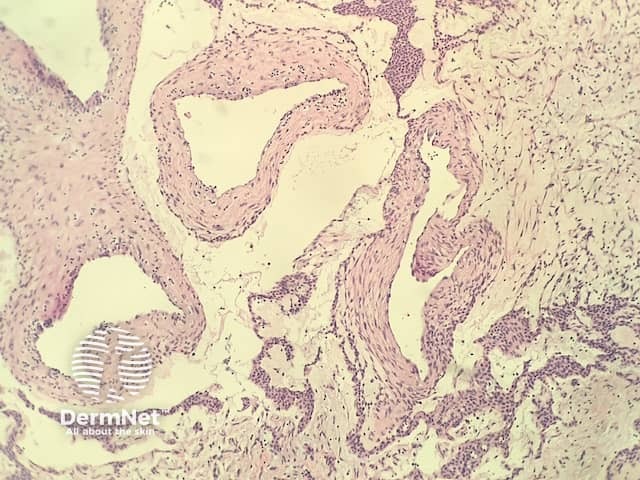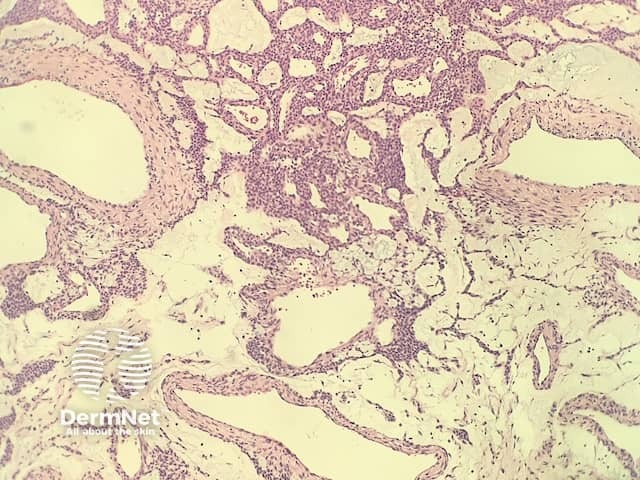Main menu
Common skin conditions

NEWS
Join DermNet PRO
Read more
Quick links
Glomangioma pathology — extra information
Lesions (benign) Diagnosis and testing
Glomangioma pathology
Author: Adjunct A/Prof Patrick Emanuel, Dermatopathologist, Clinica Ricardo Palma, Lima, Peru. DermNet Editor-in-Chief: Adjunct A/Prof Amanda Oakley. Copy edited by Gus Mitchell. June 2018.
Introduction
Glomangiomas (also called glomuvenous malformation) differ clinically from glomus tumors in that they occur in childhood and adolescence, are usually asymptomatic, do not have a predilection for the subungal region, and often are multifocal. They can vary in colour from pink-to-blue and often become darker with age; they may be plaque-like or nodular. Multiple glomangiomas are rare and comprise about 10 percent of all glomus tumours.
Histology of glomangioma
In glomangioma, the histopathology shows dilated venous channels that resemble venous malformations (figures 1, 2). Unlike venous malformations, they demonstrate single to multiple rows of surrounding cuboidal glomus cells (figures 3,4).

Figure 1

Figure 2

Figure 3

Figure 4
The glomus cells stain positively for vimentin and α-smooth-muscle actin but are negative for desmin, von Willibrand factor, and S-100.
Differential diagnosis for glomangioma
Other diagnoses to be considered include:
- Vascular malformation — these don't have the perivascular glomus cell accumulations seen in glomangioma
- Myopericytoma, angioleiomyoma, myofibroma — these all have varying degrees of perivascular muscle cells but these cells lack the classic cuboidal glomus cells. These tumours usually show a degree of desmin positivity in the perivascular cells which are not seen in glomangioma.
References
- Boon LM, et al. Glomuvenous malformation (glomangioma) and venous malformation. Arch Dermatol 2004; 140: 971–76. PubMed
On DermNet
